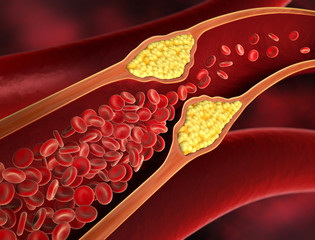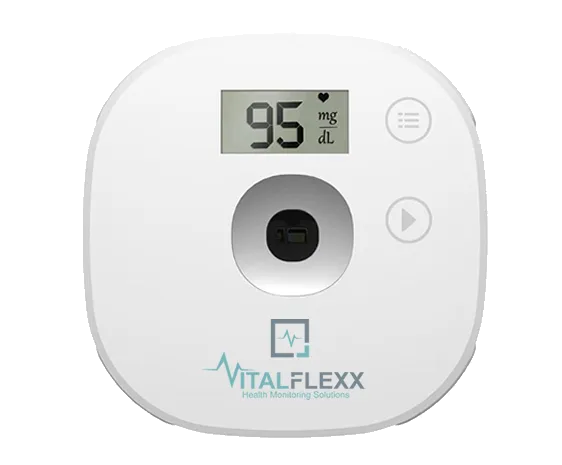Join Our Blog!
Sign up below to get the latest from our Blog and Newsfeed!

Visceral Fat & Weight Gain: What You Need to Know
Visceral Fat & Weight Gain: What You Need to Know
Visceral fat is the type of fat that surrounds your organs and is often referred to as "active" "healthy" or “hidden” fat. This type of fat differs from subcutaneous fat, the layer below the skin. (1) Unfortunately, visceral fat is often associated with a higher risk for diabetes, heart disease, and other chronic health conditions. While it's true that having too much visceral fat can be harmful to your health, it's also important to remember that this type of fat plays a vital role in our bodies. In this blog post, we will explore visceral fat, how it affects our health, and what we can do to maintain a healthy balance.
Types of Body Fat:
There are two types of body fat: visceral and subcutaneous. Visceral fat is located deep in the abdominal cavity and surrounds the organs. Subcutaneous fat is present under the skin in the hips, thighs, and buttocks. (2)
Visceral fat is more dangerous than subcutaneous fat because it releases fatty acids into the bloodstream, which can lead to insulin resistance and heart disease. Visceral fat also produces hormones that can increase inflammation.
You can get a CT scan or MRI to measure your visceral fat. To lose visceral fat, you must eat a healthy diet and exercise regularly.

What is Visceral Fat?
Visceral fat, also known as abdominal fat, is body fat stored in the abdominal cavity. This fat surrounds the organs in the abdomen and is different from subcutaneous fat, which is held under the skin. Visceral fat is more harmful to health than subcutaneous fat because it increases the risk for several chronic diseases, such as heart disease, stroke, and type 2 diabetes.
Ideal Visceral Fat Rating:
The ideal visceral fat rating is less than 10 percent for men and less than 20 percent for women. It means that if you're a man with a 32-inch waist, your visceral fat must be less than 3.2 inches thick. For a woman with a 38-inch waist, her visceral fat would need to be less than 7.6 inches thick. (3)
What Causes Visceral Fat?
Several factors can contribute to the development of visceral fat, including a sedentary lifestyle, a diet high in refined carbohydrates and sugar, and stress. Additionally, genetics may play a role in the amount of visceral fat a person has.
Why does the body stores fat around organs?
It's a question we've all asked at one point or another: why does our body store fat around our organs? Surely there must be some evolutionary advantage to it, right? Wrong. As it turns out, there is no evolutionary advantage to storing fat around our organs. It's quite the opposite. This fat storage type is a byproduct of our modern diet and lifestyle. So if you're looking to get rid of that stubborn visceral fat, you will have to make changes.
Why Visceral Fat Matters?
Visceral fat is the type of fat that is stored around our organs. It's different from the subcutaneous fat stored just under the skin. Visceral fat is more dangerous because it's associated with several health problems, including heart disease, diabetes, and certain types of cancer.
When we gain weight, our bodies store the excess calories as fat. Some of this fat is stored in our muscles, and some in our liver. But most of it is stored in our visceral fat cells.
These fat cells are different from other types of cells in our body. As a result, they produce hormones and other substances that can cause inflammation and insulin resistance. This can lead to various health problems, including heart disease, diabetes, and certain types of cancer.
So why does our body store more fat in this area? One theory is that it's an evolutionary adaptation to help us survive during famine. When food was scarce, those with more visceral fat were more likely to survive because they had a higher energy reserve.
Nowadays, food isn't scarce, and most people don't need to worry about surviving a famine. But our bodies haven't evolved to keep up with changes in lifestyle and diet. So, even though we don't need to store as much fat for survival, our bodies continue to do so.
If you're carrying extra weight, especially around your midsection, you must take steps to lose.
Dangers of Visceral Body Fat:
Visceral, or deep, body fat surrounds your organs and is linked to an increased risk of type 2 diabetes and heart disease. This type of fat also releases compounds that can contribute to inflammation throughout the body.
Excess visceral fat can lead to insulin resistance, which is a major cause of type 2 diabetes. Insulin resistance occurs when your cells don't respond appropriately to the hormone insulin, resulting in high blood sugar levels. (4)
Visceral fat also produces hormones that can increase your risk of heart disease. These hormones include leptin, which plays a role in appetite control, and adiponectin, which helps regulate metabolism. High leptin levels are associated with increased appetite and weight gain, while low adiponectin levels are linked to insulin resistance and an increased risk of type 2 diabetes.
How can I tell if I have too much visceral fat?
If you have a lot of visceral fat, it can crowd your organs and lead to inflammation. This can make it hard for your body to handle insulin and can increase your risk for type 2 diabetes and heart disease. You may also have other symptoms like fatigue, trouble breathing, and abdominal pain. A waist circumference of more than 35 inches for women or 40 inches for men is one sign that you may have too much visceral fat. Other signs include high blood sugar, high triglycerides, low HDL cholesterol, and high blood pressure. If you have any of these symptoms, talk to your doctor about losing weight and reducing your risk for health problems.

Track Your Weight with the VitalFlexx Health Scale
When to Contact a Doctor?
If you are concerned that you may be carrying too much fat around your organs, or if you have any other health concerns, it is always best to consult with a doctor. They will be able to provide you with the most accurate information and help you create a plan to improve your health.
How to Measure Visceral Body Fat?
You can measure your visceral body fat by any of the three methods.
Waist Measurement:
The most common and simplest method is to use a tape measure. To do this, you'll need to find your natural waistline. It is the narrowest part of your torso, typically located just above your belly button. Once you've found your natural waistline, wrap the tape measure around your waist, ensuring that the tape is level all the way around. Make sure to exhale before measuring so that you don't compress your stomach too much.
Dual-Energy X-Ray Absorptiometry (DEXA) Scan:
The DXA is the reference method for measuring three compartments: fat, mineral, and lean mass. Its measurement lasts for about 3 minutes and gives access to imagery. However, dual-Energy X-Ray Absorptiometry (DEXA) Scan measurement is expensive and gives rise to low irradiation. (5)
Bioelectric Impedance Analysis:
Another way to measure visceral body fat is with bioelectrical impedance analysis (BIA). It involves sending a small electrical current through your body to estimate body composition. BIA is generally considered to be accurate within 2-4% for body fat percentage measurements. (6)
How can I lose Visceral Body Fat?
If your visceral fat rating is higher than it should be, there are things you can do to reduce it.
Regular Exercise
Exercise and any physical activity is the best way to eliminate visceral fat. But exercise alone won't help you unless you take a healthy diet.
Balanced Diet
A healthy diet is key to a healthy weight and nutritional health. So, to get rid of visceral body fat, you need to have a balanced diet rich in nutrients and vitamins. Avoid eating junk or fast for better health.
Healthy Lifestyle changes
Without making healthy lifestyle, changes, you cannot eliminate visceral fat. Healthy lifestyle changes include healthy eating habits and quitting cigarettes, nicotine, alcohol, and other drugs.
Reducing Stress.
Stress is the enemy of good health. Therefore, you need to manage it carefully. You can achieve this by getting enough sleep, exercising regularly, and engaging in healthy activities.
References
jaliman.MD PFRbD. What Is Visceral Fat? Nourish by WebMD. 2021 August.
Bubnis MrbD. Types of Body Fat: Benefits, Dangers, and More. Health Line. 2019 May.
Zhengyang Xu 1YLCYRYLXZGAYXCLMCHaGGaKH. Measurement of visceral fat and abdominal obesity by single-frequency bioelectrical impedance and CT: a cross-sectional study. National Library of Medicine. 2021 October.
Bubnis D. What is the best way to get rid of visceral fat? Medical News Today. 2018 February.
Krugh M, Langaker. MD. Dual Energy X-ray Absorptiometry. National Library of Medicine. 2022 June.
Sami F. Khalil MSMFI. The Theory and Fundamentals of Bioimpedance Analysis in Clinical Status Monitoring and Diagnosis of Diseases. National Library of Medicine. 2014 June.

